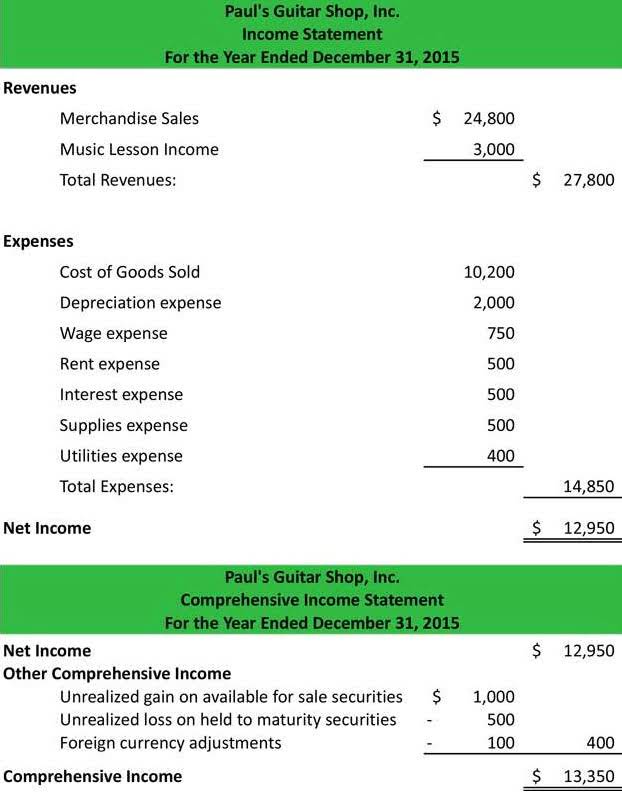The people doing these tax returns are IRS-certified volunteers. But these volunteers can do basic tax returns, along with IRA distributions, pension income, simple forms of capital gains, self-employment income and some itemized deductions. The American Opportunity Tax Credit is offered to students who pay qualified tuition (and aren’t claimed as dependents elsewhere) or to parents who pay expenses for their dependent students or themselves. The American Opportunity Credit allows you to claim the credit for the first four years of college on qualified expenses. A qualified educational expense can be anything from tuition to required campus fees. Depending on the credit you claim, you may be able to include the cost of books, supplies and equipment, too.
- Only certain education expenses, such as tuition and required fees for enrollment, qualify for the Lifetime Learning Credit.
- Live a straightforward financial life with few complications or income sources?
- • The American Opportunity Tax Credit provides a credit of up to $2,500 per student enrolled in the first four years of higher education.
- To make sure a school is eligible, go to fafsa.gov and verify that it has a Federal School Code.
- This section of the form determines whether or not your credit will be diminished by the amount of your MAGI.
But only customers who have “limited credits” — meaning they have a simple tax return and they’re claiming the earned income tax credit or child tax credit, but no other tax credits — can take advantage of that offer. With the rising cost of higher education, many taxpayers wonder how they can offset some of their school expenses. One option is to claim the Lifetime Learning credit on your federal income tax return. This credit reduces your tax bill on a dollar-for-dollar basis for a portion of the tuition, fees and other qualifying expenses you pay for yourself, a spouse or a dependent to enroll in school. The credit is calculated based on a maximum of the first $4,000 worth of qualified education expenses per eligible student.
The amount of credit is 100% of the first $2,000 you spend on qualified education expenses you paid for each eligible student. For the next $2,000 you spend on qualified education expenses, 25% is covered by the AOTC credit for a maximum total credit of $2,500. This applies to each eligible student — so if you’re https://turbo-tax.org/ a parent with multiple kids in college, you can claim the credit for each one. The amount of the credit is 20 percent of the first $10,000 of qualified education expenses or a maximum of $2,000 per return. So, you can use the credit to pay any tax you owe but you won’t receive any of the credit back as a refund.
To claim the full credit, your modified adjusted gross income (MAGI) must be $80,000 or less (or $160,000 or less if you’re married filing jointly). You will receive a reduced amount of the credit if your MAGI is over $80,000 but more than $90,000 individually (over $160,000 but less than $180,000 married filing jointly). You can get a maximum credit of $2,500 for each qualifying student.
Thank you for helping us improve the TurboTax Community!
• The maximum credit you can claim is 20% of up to $10,000 in eligible costs, for a maximum credit of $2,000. All features, services, support, prices, offers, terms and conditions are subject to change without notice. Qualified expenses include tuition and mandatory enrollment fees at an eligible institution. Books and course materials can also count, but only if you are required to purchase them directly from the school. Other expenses, such as optional fees and room and board, do not qualify.
But “transparency is a wonderful thing, and that’s what we’ve got to get better at, so consumers are aware what they are signing up for,” Olson said. Overall, it’s “incredibly challenging” for people to understand whether free tax-preparation offers really apply lifetime learning credit turbotax to them, said Nina Olson, the former IRS national taxpayer advocate. News, discussion, policy, and law relating to any tax – U.S. and International, Federal, State, or local. The IRS is experiencing significant and extended delays in processing – everything.
Important differences between LLC and AOTC
A Form 1040 return with limited credits is one that’s filed using IRS Form 1040 only (with the exception of the specific covered situations described below). If you have qualified educational expenses, the Lifetime Learning Credit can provide you with a credit of up to 20 percent of those costs. For purposes of the credit, qualified educational expenses are generally limited to tuition and fees for you, your spouse and your dependents. If the purchase of books, supplies or equipment is necessary for enrollment, those costs may be included as well. Answer simple questions and TurboTax Free Edition takes care of the rest.
The maximum annual credit is $2,000, calculated as 20% of the first $10,000 in qualifying educational expenses. But there is no limit on the number of years of higher education for which you can claim it. If you or your dependent is a student, you may want to determine whether you are eligible for one of the two educational tax credits that cover common student expenses. These credits reduce your tax bill on a dollar-for-dollar basis.
The credit is only available to students in their first four years of attendance, who enroll at least half time for one academic period during the tax year and do not possess a felony drug conviction. • The American Opportunity Credit provides up to $2,500 in tax credits to cover the tuition, fees and course-related books, supplies and equipment of students in their first four years of college. This tax credit allows you to claim up to $2,500 per eligible student. The full credit is available for individuals with a MAGI (Modified Adjusted Gross Income) of $80,000 or less and $160,000 for married filing jointly. If your MAGI is over $80,000 but less than $90,000 (over $160,000 but less than $180,000 for married filing jointly), you will receive a reduced amount of the credit.
Credit Agricole в г. Киев
Room and board do not count as qualified expenses nor do optional fees to cover things like student health insurance, athletics and other activities. “Books and things” are not qualified expenses for the LLC, unless required to be purchased from the school. Here’s a link where to find nearby organizations participating in the VITA and TCE programs.
Take Advantage of Your Education
The full credit may be claimed by people with modified adjusted gross income (MAGI) of up to $80,000 for single taxpayers and $160,000 for married taxpayers filing jointly. Lower-income taxpayers also benefit because up to 40% of the credit (or $1,000) is refundable, meaning that you can expect a check from the government if you owe no taxes. If you claim either of the tax credits, the IRS requires you to fill out Form 8863 and attach it to your tax return. Form 8863 requires you to calculate the appropriate credit amount based on your eligible school expenses.
Almost all accredited public, nonprofit and for-profit postsecondary schools (including many trade schools) fit this description. To make sure a school is eligible, go to fafsa.gov and verify that it has a Federal School Code. The IRS has a list of the tax scenarios that Free File providers can handle. It includes capital gains and losses, self-employment taxes, and child and dependent care expenses — all of which aren’t included in the free versions of TurboTax and H&R Block, or IRS Direct File. The Free File program is an IRS partnership with some tax software companies — but not TurboTax and H&R Block. The program has run for two decades yet few taxpayers take advantage of it.



